Interested in learning more about how Montessori Math materials work?
Math is not everyone’s strong suit or desired subject. I used to feel the same way before taking the Montessori training and gaining a better understanding of how the Montessori materials actually detail the way in which math is comprehended and how it works. I literally had an “aha” moment when in my training, once I internalized and learned the materials and the presentations.
This post may contain affiliate links. I may earn compensation when you click on the links; at no additional cost to you. Please see the disclosure policy for more information.
Montessori Math, what is it?
Montessori math activities and materials are varied. There are many functions and skills that are introduced, developed, and mastered in this area of a Montessori environment. From counting, to ordering, to classifying, to performing operations; Montessori Math can foster mathematical experiences on a variety of different developmental levels, which follow the needs of the child.
Montessori Math, how does it work?
Math can be thought of as logical, sequential, and ordered. In the Montessori philosophy, it is stated that the child has a mathematical mind, and an internal drive to understand the environment around them. The Montessori math curriculum exposes children to the concrete materials first, then opportunities to work on abstract materials. By concrete, it is meant that children are able to physically hold or touch the materials; materials that represent or are symbolic of a number or quantity. Eventually, children will gradually move from physical materials to activities on paper or in their heads. This is the Montessori way.
Related Post: What is all the hype about? A detailed look inside a traditional Montessori class
Mathematical breakdown of concepts
In Montessori Math, concepts and materials are broken down into categories. They are from zero to ten, place value, and fundamental operations. In Montessori, fundamental operations are taught in this order; addition, multiplication, subtraction and then division. Each of the Montessori Math activities listed below represents each of the concepts listed above.
5 Montessori Math activities for under $40
Activities for the “from zero to ten” concept:
1. Sandpaper Numbers
A math material composted of a box containing wooden boards with sand textured numbers from zero to nine.
Purposes of the Sandpaper Numbers are to:
- exercise the development of number concepts
- experience the symbols for the numbers zero to nine
- prepare for writing
2. Spindle Boxes
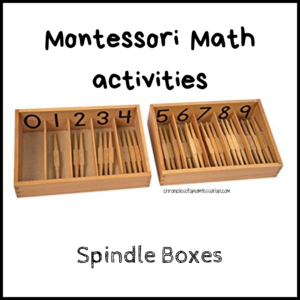
A math materials consisting of two wooden boxes, each divided into five compartments. Above each compartment is a number marked in order. This work also comes with forty five wooden spindles.
Purposes of the Spindle Boxes are to:
- practice with one to ten number concepts; counting, set, number, and order
- experience zero as a symbol for “nothing or empty”
3. Bead Stair

A math work that consists of small number cards from one to nine, a bead stair board, and colored beads that correspond to each number from one to nine.
One-red
Two-green
Three-pink
Four-yellow
Five-light blue
Six-purple
Seven-white
Eight-brown
Nine-dark blue
Purposes of the Bead Stair are to:
- practice with one to ten number concepts
- practice counting skills
- practice ordering quantities by length
- gain familiarity with the bead stair and its color codes in preparation for later exercises
Activities for the “place value” concept:
4. One Hundred Board
A math material consisting of a framed board marked with a ten by ten square matrix, a box of one hundred tiles; each of the squares marked with a number from one to one hundred, and a control chart.
Purposes of the One Hundred Board are to:
- exercise the development of number concepts and logical thought
- increase recognition of numbers from one to one hundred
- practice counting up to one hundred using symbols
Activities for the “fundamental operations: concept:
5. Stamp Game
A math material that consists of a box containing small wooden “stamps” that are color coordinated for the ones (green), tens (blue), hundreds (red) and thousands (green) and that are printed with a “1”, “10”, “100”, and “1000” on each stamp.
Purposes of the Stamp Game are to:
- exercise the development of number concepts and logical thought
- experience a more abstract representation of number
- reinforce the idea of place value
- compose four place numbers
- prepare for use of the stamp game in performing operations
- practice writing numbers
Related Post: 5 Key Tips on Implementing Montessori at home
Looking to learn more about adding Montessori to your home? The FREE Add Montessori to Your Home School course will help you incorporate Montessori practices and principles!
Every authentic Montessori environment has these as well…
Every Montessori environment must have a designated work space for children to work and determine their work area. Work rugs are a necessity for children to use and learn to care for materials and work. Only a couple of these are needed, children can share them, and learn to take turns and patience as they wait for a work rug to become available.
Work rugs
Work rugs are important element to the Montessori environment, whether it be classroom or home school! Work rugs help define the designated work space for children’s work, and aids in keeping their work area tidy, orderly and organized.
Related Post: 5 must have IKEA products for your Montessori environment
Incorporating Montessori Math into your environment
When it comes to choosing which materials to introduce to your child(ren) and add to your environment depend on the individual needs and developmental level of each child. It is important to have a variety of difficulty levels when choosing materials, to challenge and keep the interest of the child engaged. Always remember that a child may spend as much time as needed on a particular skill or concept, until they have cognitively mastered the necessary purposes and experiences. Mastery of a skill or concept should not be rushed or skipped, follow the lead of the child.
Do you have a particular Montessori Math material that interests you? Let me know in the comments below!

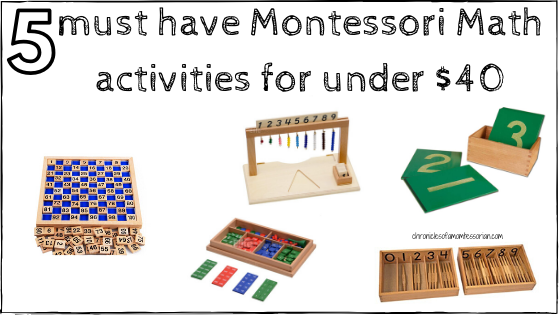

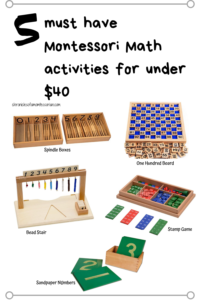
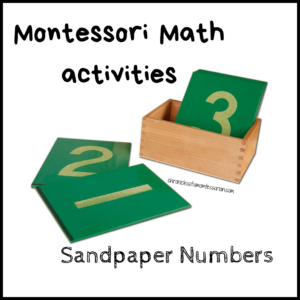

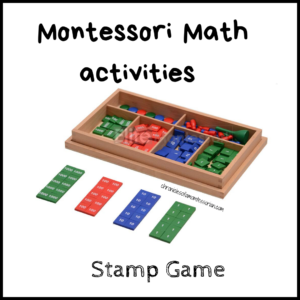



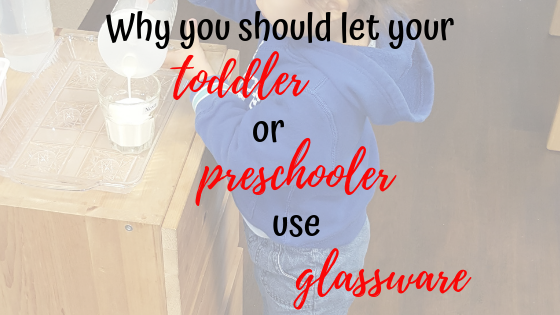


[…] Must Have Montessori Math Materials Under. Budget Friendly Montessori Math Materials To Add To Your Childs Montessori Environment chroniclesofamomtessorian.com […]